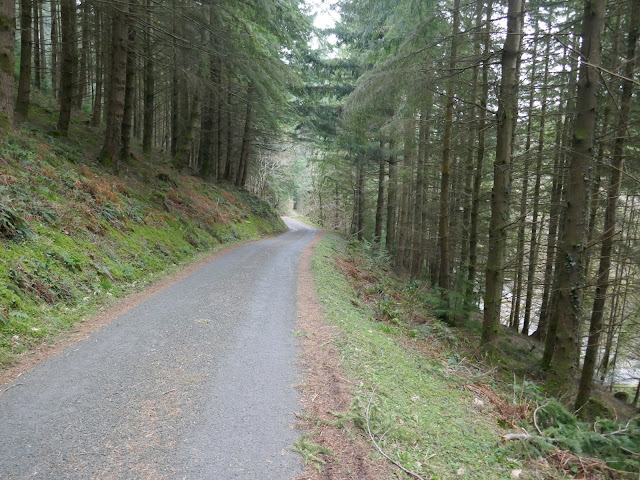This map was created using GPS Visualizer's do-it-yourself geographic utilities.
Please wait while the map data loads...
Route: Tynllwyn, Cae Hydgyll, Coed Cae Hydgyll, Swallow Falls, Miners Bridge, Betws-y-Coed, Pen-yr-allt-isaf , Coedmawr, Llyn Sarnau, Tynymynydd
From: Tynllwyn
Parking: Tynllwyn viewpoint
Start Point: Tynllwyn
Region: Snowdonia
Route length: 7.3 miles (11.7 km)
Time taken: 04:00
Average speed: 2.4 mph
Ascent: 648m
Descent: 655m
Summits: None
Other points of interest: Swallow Falls, Miners Bridge, Betws-y-Coed, Llyn Sarnau
With strong winds and rain forecast for the day, we decided against any serious mountain climbing, instead, seeking out a lower-level route somewhere in northern Snowdonia. I happened across a circuit on the excellent Mud and Routes which takes in the sights along the Afon Llugwy as well as venturing into some relatively uncharted territory in the woods above Betws-y-Coed.
We started from a free car park at the viewpoint of Tynllwyn, accessed via a narrow road from the Ugly House (Ty Hyll) on the A5. You could start this walk higher up at Llyn Sarnau or even in Betws-y-Coed itself. From the car park, a path winds down through the woods to Swallow Falls, waymarked the entire way.
 |
| Bright sun over Betws-y-Coed and the Llugwy Valley |
 |
| Waymarking leads to the Swallow Falls |
 |
| The path leading through the woods at Coed Cae Huddygl |
 |
| The upper cascades of Swallow Falls |
 |
| Swallow Falls |
 |
| Swallow Falls |
 |
| The old quarry path above Afon Llugwy |
 |
| Following the signs for the Slate Trail |
 |
| One of the small streams in the Gwydyr Forest |
 |
| Gwydyr Forest |
 |
| One of the many forest tracks in Gwydyr Forest |
 |
| Afon Llugwy |
 |
| The Miners Bridge |
 |
| The Miners Bridge |
 |
| Afon Llugwy |
 |
| Afon Llugwy |
 |
| Betws-y-Coed |
 |
| Climbing into the Gwydyr Forest |
 |
| Climbing through the trees of the Gwydyr Forest |
 |
| Looking south towards the Lledr valley |
 |
| A peek through the trees over the Conwy Valley |
 |
| Gwydyr Forest |
 |
| The forest road at Coedmawr |
 |
| Sun over the Lledr valley |
 |
| Moel Siabod hides in the cloud |
 |
| The hills of the Ogwen valley |
 |
| Llyn Sarnau |
 |
| Llyn Sarnau |
 |
| Llyn Sarnau |
 |
| Remains of the Cyffty mine |
 |
| The Llugwy valley once again |

Yup, I'd second that recommendation.
ReplyDelete